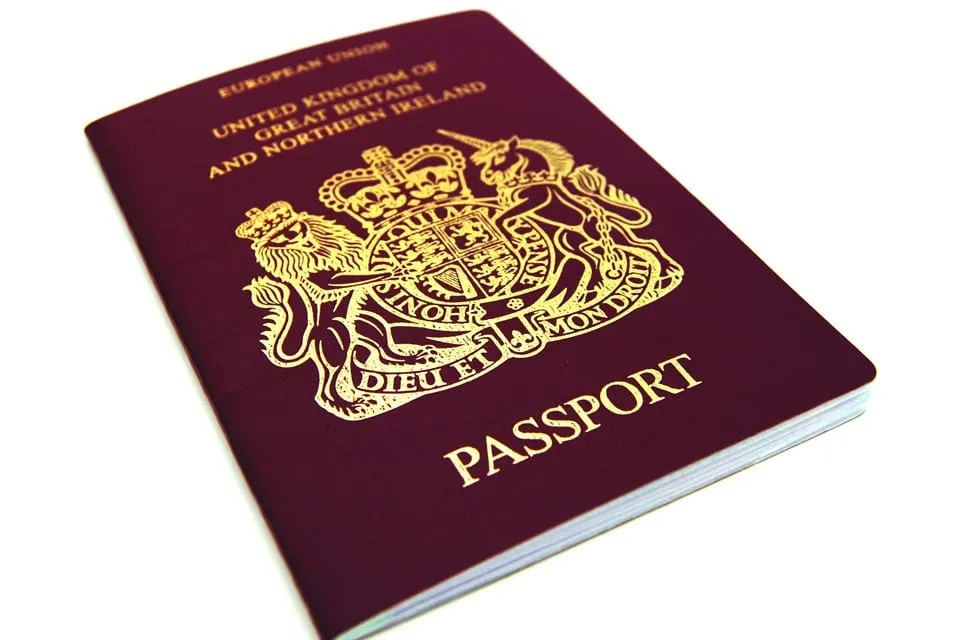How Many Immigrants Are in the UK?
The UK’s migrant population is rising year on year. Migration statistics and studies from 2022 are able to shed light on how many foreign-born nationals actually live in the UK.
For more information about your immigration case, including if you need help in coming to the UK to work, study or reunite with family, IAS are on hand to help. Call us today on 0333 305 9375, or contact us online.
Read our 1001 reviews
Overview of Immigrants in the UK
A number of factors have influenced net migration and immigration numbers for the UK in the past few years.
In addition to significant world events and changing government policies influencing these figures, there are also continuing historic and social reasons as to why people choose to leave, and move to, certain countries.
The culmination of these reasons for immigration is unprecedentedly high levels of immigration to the UK – a trend that is set to continue well into the future.
We have already covered why migrants come to the UK, and which immigration routes are the most popular. But stepping away from these core reasons, how many immigrants are in the UK in total? What proportion of the UK population are foreign born, and how has this figure changed in the past couple of decades or so?
Statistics measuring migration from the Migration Observatory, International Passenger Survey estimates and the Office for National Statistics (ONS) Annual Population Survey provide definitive answers to these questions and more.
What Is an Immigrant?
Before diving into the statistics, it’s important to first establish what an immigrant actually is.
The basic definition of an immigrant is someone who travels to a foreign country with the intention of settling there permanently.
This is technically distinct from the term “migrant”, which refers to any individual (who may be foreign-born or have foreign citizenship) entering into a new country regardless of their specific motivation.
From this, we may surmise that all immigrants are migrants, while not all migrants are not necessarily immigrants.
However, while these two terms have distinct meanings and definitions in the dictionary, the difference between these two terms is not clearly established in UK law or even in most academic research.
Further confusing matters is the debate over the definition of the term “migrant”, and which specific groups of people this word encompasses when drawing up data. For example, there is some disagreement over whether foreign-born British citizens coming to the UK should be classed as “migrants”, and so on.
For the purposes of this article, however, the term “immigrant” and “migrant” will be used interchangeably to simply refer to anyone who is in the UK who was not born in the UK.
Immigration Population of the UK, Year Ending June 2022
As of the year ending June 2022, there were an estimated 10,388,000 people in England and Wales who were not born in the UK.
This accounts for approximately 14.8% of the total UK population.
Of this number, 3,545,000 were nationals born in European Union countries, while 6,854,000 were born outside the EU.
As previously mentioned, there are only certain specific people to whom this overall statistic applies to. For example, the total figure of 10,388,000 people:
- Only applies to those who were born outside the UK who were also in the UK as of the year ending June 2022. This includes:
- People in the UK with UK citizenship who were born overseas
- People in the UK with any kind of foreign citizenship who were born overseas
- May not count certain groups of people such as those in communal living spaces such as hostels or some student halls
- May be slightly smaller than the actual number of immigrants in the UK due to survey non-responses and changes to survey methods due to the pandemic
- Counts both foreign-born nationals who are UK temporarily and those who are settled (or who intend to settle) in the UK long-term
How Has The Immigrant Population Changed in the Past Two Decades?
Comparisons to 2004
Using official statistics going back to 2004, we can calculate the growth of immigrants in the UK and the influence of recent events such as the COVID-19 pandemic on these statistics.
As of 2004, there were 5,258,000 immigrants in the UK, accounting for around 8.9% of the total population.
The difference between this statistic and the one from 2022 is stark; the number of immigrants has almost doubled in this 17 year period, with the percentage of total population being immigrants increasing by almost 5%.
This represents a difference of approximately 5 million individuals between these two years.
Yearly Patterns: 2017/2018
During the period between 2004 and 2022, the number of immigrants in the UK has steadily risen every year, usually by an average of around 0.5%.
One period of time where this wasn’t the case was 2017 to 2018, where the number of immigrants in the UK lowered slightly from around 9,382,000 (14.4% of the total population) to around 9,342,000 (14.2% of the total population).
The reasons for this disruption in the upward trend are relatively easy to surmise. The EU Referendum took place on 23 June 2016, in which the UK voted to leave the European Union and end free movement, which also subsequently had a ripple effect on migration and emigration numbers.
The decrease in immigration immediately after this can be attributed to a number of factors, such as the value of the pound dropping significantly, leading many businesses to speculatively withdraw from the UK; general political uncertainty due to the referendum’s result; and a possible natural downturn in EU migration to the UK that may have been expected to happen regardless.
Notably, both EU migration to the UK and the number of immigrants in the UK lowered during this time despite no new border policies, restrictions or plans having been put in place yet. This ultimately underlines the significant effect that Brexit was having on UK immigration, even back in 2016.
Yearly Patterns: 2019/2021
Meanwhile, the statistics also point towards a stagnation in UK migrant numbers immediately after 2019.
While the actual number of immigrants in the UK rose incrementally in the period between 2019 and 2021, the overall percentage of immigrants in the UK has remained at 14.4% for this specific period.
Once again, we see the effects that COVID-19 has had on international immigration. The year 2020 saw widespread lockdowns and severe restrictions on international travel, which explains why the rise in numbers of immigrants in the UK was minimal.
As parts of the world are still very much in the process of recovering from the impact that the pandemic has seen, it may be a while before we see the full long-term impact that this has had on immigration. However, statistics from the Home Office suggest that immigration to the UK has increased significantly in the year 2021 to 2022, which may suggest a return to the usual yearly increase in immigrant numbers for the first time since 2017.

Changes in EU and Non-EU Populations
The number of non-EU migrants has always been significantly larger than the EU migrant population in the UK. This is evident even when tracing statistics back to 2004, where there were 3,767,000 non-EU nationals and 1,491,000 EU nationals living in the UK at the time.
The non-EU population in the UK has seen a consistent and steady rise every year since 2004, with no recorded decreases or deviations from this trend for the whole time period. This even includes the period between 2020 and 2021, where the non-EU immigrant population rose by just over 56,000, despite the ongoing pandemic.
Meanwhile, the rise of the EU population in the UK has historically been a little more inconsistent. The number of EU migrants increased every year in the UK since 2004, before finally peaking at 3,705,000 in 2017. After this, the figure started to drop slightly before rising and falling again, but never exceeding the numbers recorded in 2017.
Here, we can observe the long-term effects of the referendum on EU immigration numbers in the UK. The steadily increasing numbers of EU immigrants in the UK was interrupted in 2016/2017 by the UK’s decision to leave the UK, which both discouraged further immigration to the UK from the EU and led to many thousands of EU citizens in the UK to leave.
The number of EU migrants in the UK has further been affected by the pandemic in recent years. Therefore, it may be a while before the numbers seen in 2017 will remain as a historic peak due to the end of free movement, or if EU migrant numbers will eventually recover and exceed this number in 2023 and beyond.
Where Do Most Immigrants Live in the UK?
Although most of the UK-born population are fairly evenly distributed throughout the country, it’s clear that certain parts of the country are more likely to have higher immigrant populations than others.
Unsurprisingly, London comes out on top for this. A study released by the Migration Observatory in August 2022 found that around 3,346,000 (35% of all UK-based immigrants) lived in London.
Combined with the additional 1,286,000 (13% of all UK-based immigrants) who lived in the South East means that nearly half (48%) of all immigrants in the UK lived in this single area of England at the end of 2021 alone.
This is in contrast to only around 10% of the total UK-born population who called London their home in the same time period.
After London and the South East, the West Midlands had the highest proportion of immigrants in this period, with around 9% of the total population. The East of England and the North West each had 8% of the total population.
The part of the UK with the lowest percentage of immigrants, meanwhile, was Northern Ireland, with only 1% of the total immigrant population.
These statistics are certainly nothing new in the context of UK immigration. London has long been an international melting pot and historic destination for immigration, while the West Midlands is well-known for its sizable Indian and Pakistani population, especially around the cities of Birmingham and Coventry. In a Migration Observatory regional profile conducted in 2017, these two nationalities accounted for over 27% of all foreign-born residents in the West Midlands.
How Can IAS Help?
The UK’s foreign born population has generally tended to follow a consistent pattern in recent years, with only major political and world events having notable influences on the trajectory of these trends.
From this, it may be sensible to assume that these figures will continue to steadily increase in the future as international migration numbers themselves correspondingly increase.
If you’re a foreign national looking to join the significant and well-established immigrant and foreign born population in the UK, whether you wish to come for work, study, to reunite with family or just to visit, IAS can help.
We offer complete and comprehensive legal services for all types of immigration both into and out of the UK. Our services encompass visa applications, visa appeals, document checks, concierge services and asylum seekers looking to make an asylum claim.
We can, for example, liaise with the Home Office and the UK government on your behalf to help you navigate the UK immigration system and ensure that you’re able to get the immigration status, permissions and visas you need to safely immigrate to the UK.
Take the first step in getting help with your immigration issue today. Reach out to one of our advisers on 0333 305 9375, or contact us online for more information.
Table of Contents
Table of Contents will appear here.Table of Contents
Table of Contents will appear here.Legal Disclaimer
The information provided is for general informational purposes only and does not constitute legal advice. While we make every effort to ensure accuracy, the law may change, and the information may not reflect the most current legal developments. No warranty is given regarding the accuracy or completeness of the information, and we do not accept liability in such cases. We recommend consulting with a qualified lawyer at Immigration Advice Service before making any decisions based on the content provided.















